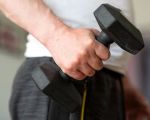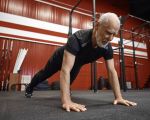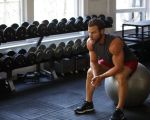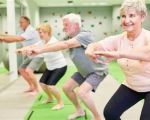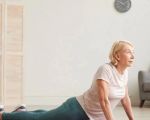1. Understanding Posture Challenges of Desk Jobs
Working long hours at a desk often leads to poor posture due to prolonged sitting, forward head position, and slouched shoulders. These habits place undue stress on the spine and surrounding muscles, causing discomfort and increasing the risk of chronic pain. Understanding these challenges is essential before incorporating gym workouts for improving posture at desk job settings.
When sitting, the pelvis tends to tilt backward, weakening the core muscles and tightening the chest and hip flexors. Over time, these imbalances worsen posture and reduce mobility. Awareness of how your body responds to desk work sets the foundation for effective corrective exercises.
1.1 Effects of Poor Posture on Health and Productivity
Poor posture can lead to headaches, neck and back pain, and decreased energy levels, negatively affecting productivity. It may also contribute to breathing difficulties and digestive issues. Addressing posture proactively through gym workouts not only improves physical well-being but enhances focus and performance at work.
2. Key Muscle Groups for Posture Improvement
Improving posture requires strengthening specific muscle groups and increasing flexibility in others. The primary focus areas include the upper back, core, shoulders, and hips.
2.1 Strengthening the Upper Back and Shoulders
Muscles like the rhomboids, trapezius, and rear deltoids pull the shoulders back and stabilize the spine. Weakness here often results in rounded shoulders and forward head posture.
2.2 Core Muscle Activation
A strong core supports the lumbar spine and helps maintain an upright position. Engaging the abdominal muscles prevents excessive lumbar arching or slouching.
2.3 Hip Flexor Flexibility
Tight hip flexors pull the pelvis forward, contributing to lower back strain. Stretching and lengthening these muscles restore pelvic alignment.
3. Recommended Gym Workouts for Posture Correction
Incorporating targeted exercises into your gym routine is key to counteracting the negative effects of desk work. Below are several effective workouts that specifically address posture improvement.
3.1 Rows and Face Pulls for Upper Back Strength
Exercises such as seated rows, cable face pulls, and reverse flys engage the upper back muscles, promoting scapular retraction and reducing shoulder rounding. Performing 3 sets of 12-15 reps with controlled form maximizes benefits.
3.2 Planks and Dead Bugs to Build Core Stability
Core workouts like front planks and dead bugs activate deep abdominal muscles. These moves improve spinal support and endurance for prolonged sitting.
3.3 Hip Flexor Stretches and Mobility Drills
Dynamic stretches such as lunges with a hip flexor stretch or pigeon pose open tight hip muscles. Incorporate these before and after workouts to maintain flexibility.
4. Real-Life Experience Improving Posture Through Workouts
Consider Emma, a graphic designer who suffered from chronic neck pain due to poor desk posture. After integrating gym workouts focused on upper back strength and core stability, she noticed significant improvements within six weeks. Not only did her pain decrease, but her energy and confidence at work improved dramatically.
Emma’s story highlights how consistent, targeted exercise can transform posture and overall well-being, even for those with sedentary jobs.
5. Tips for Maintaining Good Posture at Work
While gym workouts are essential, daily habits also play a crucial role. Ergonomic adjustments such as chair height, monitor positioning, and using lumbar supports help maintain neutral spine alignment. Taking short breaks to stand or walk every hour reduces stiffness and encourages movement.
Incorporating mindful posture checks and simple stretches throughout the workday reinforces the gains from gym exercises.
6. How Fitness Can Support Posture Goals
Fitness is a powerful tool for combating the negative effects of desk jobs. Beyond the gym workouts for improving posture at desk job scenarios, a holistic fitness approach that includes cardiovascular health, flexibility training, and stress management enhances overall musculoskeletal health.
For personalized workout plans, equipment, or posture support products, visit Fitness. Our resources help you find the most suitable options to keep your posture strong and your workdays comfortable.



